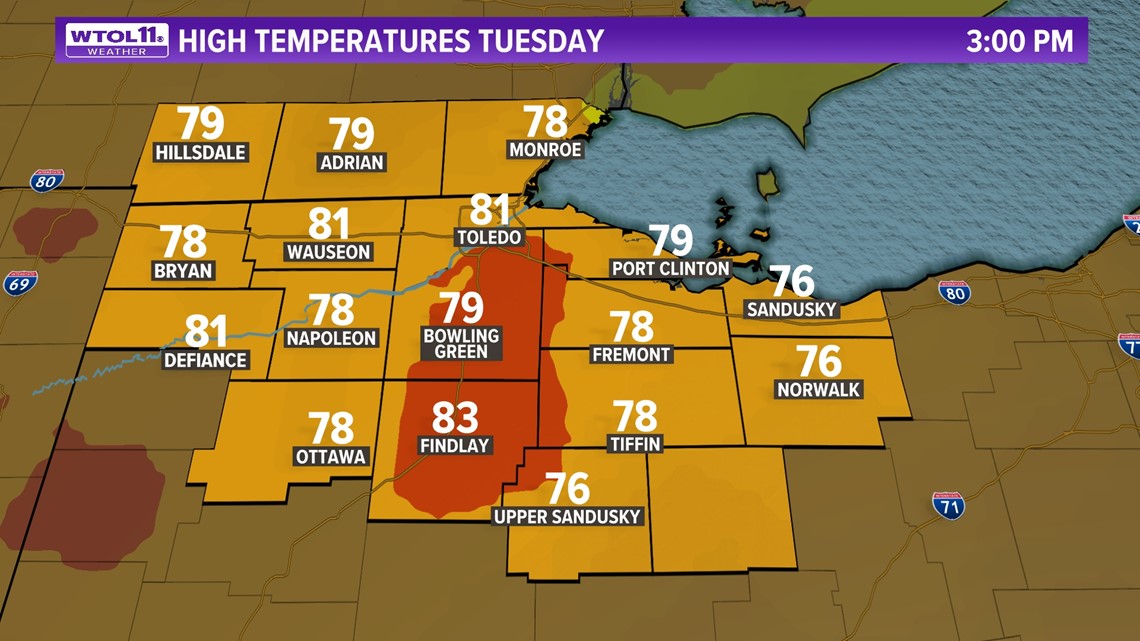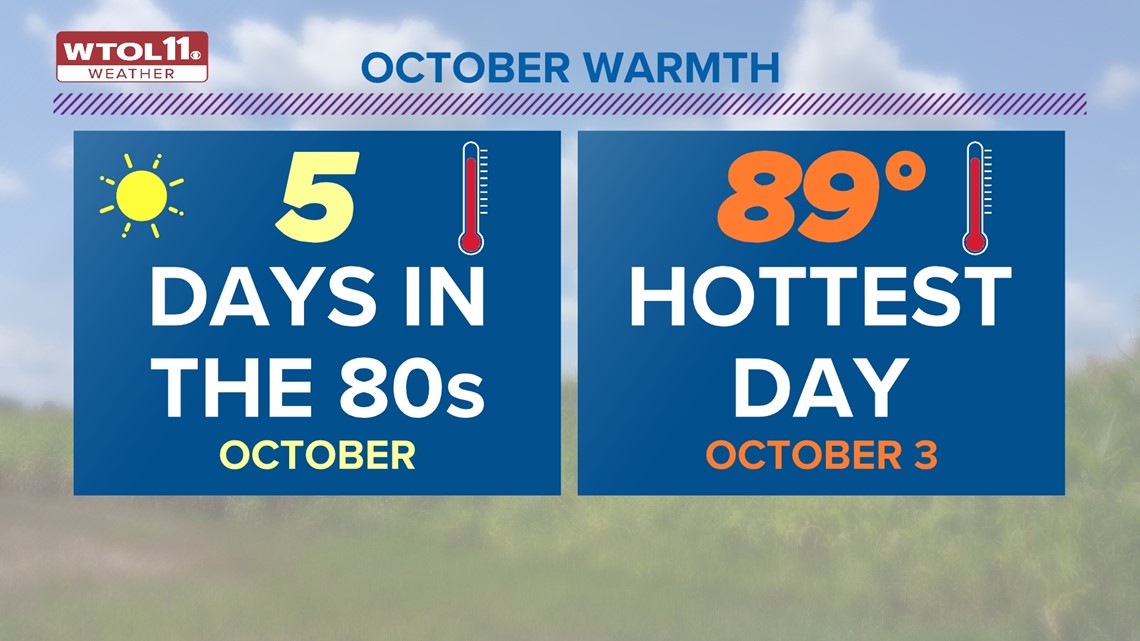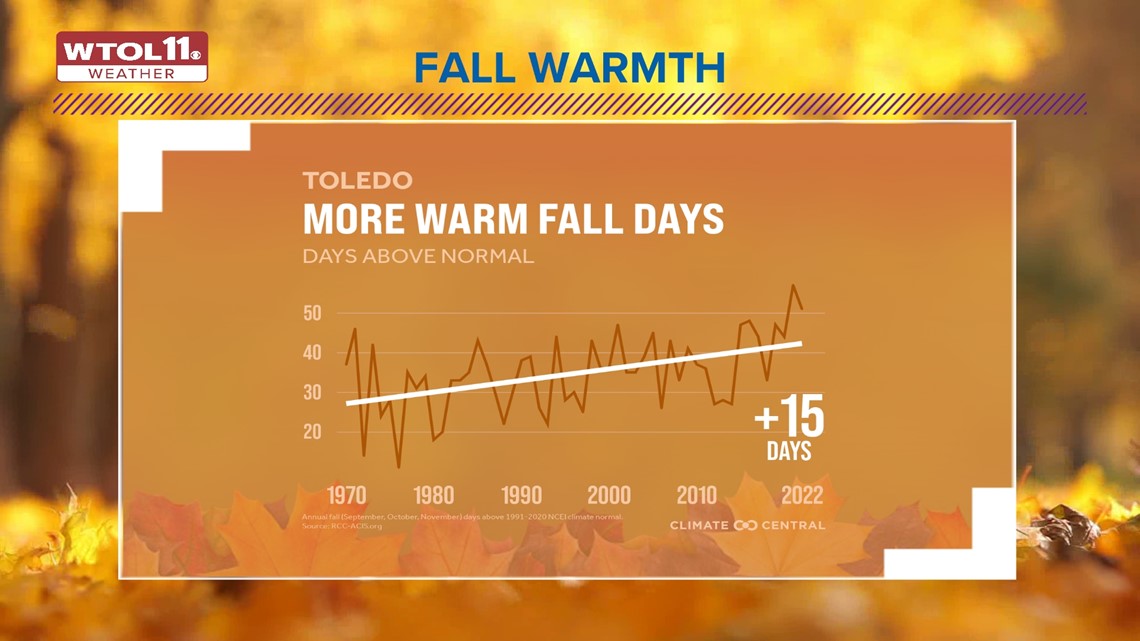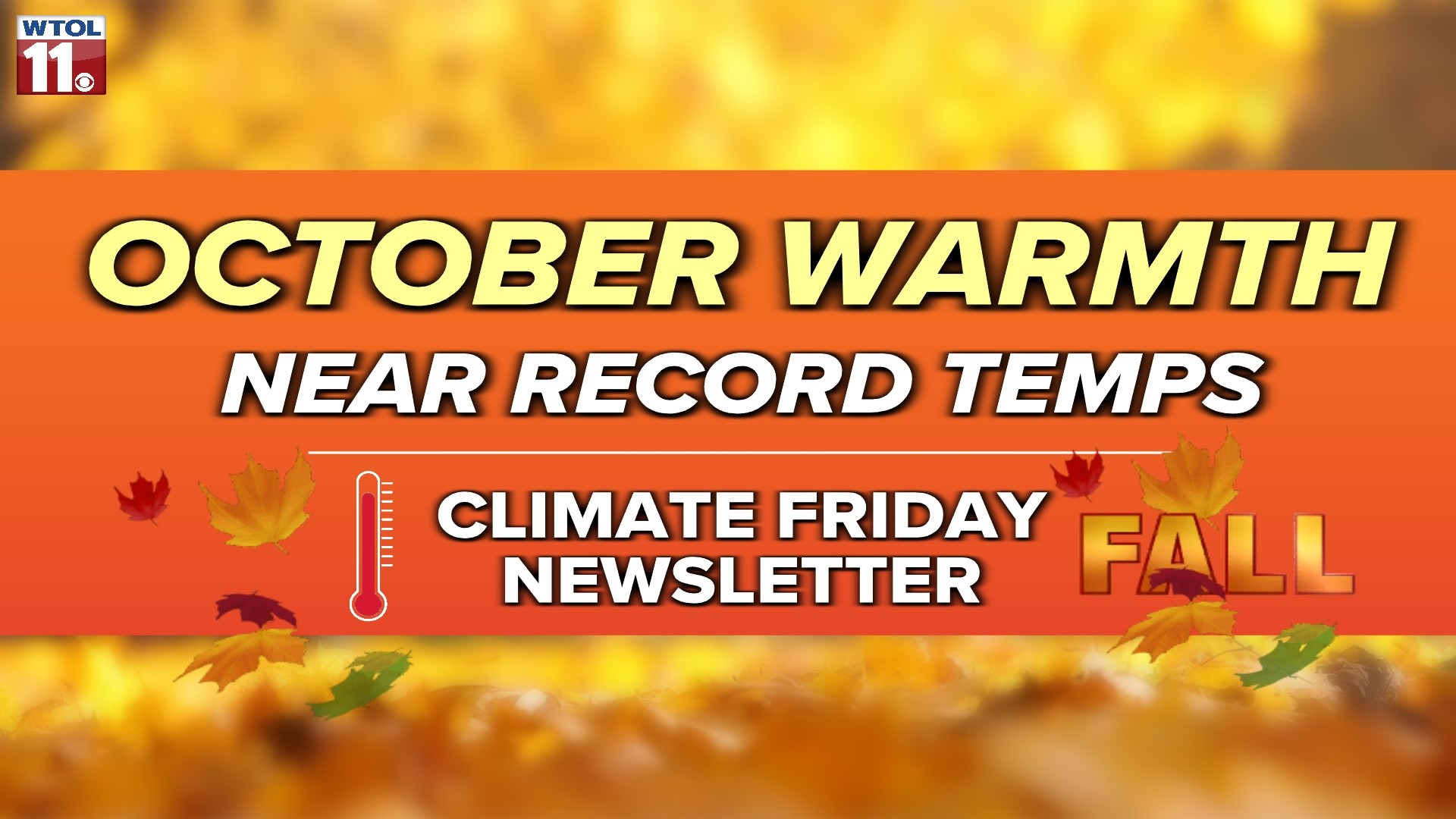TOLEDO, Ohio — Summer weather in October? Even though the calendar says October, Mother Nature has delivered a taste of summer this week. With near-record temperatures in the 80s, this week has brought unseasonably warm conditions. How is climate change impacting fall warmth and what can you expect as we round the corner from October into November? Meteorologist John Burchfield answers those questions in this week's edition of Climate Friday.
Before the summer-like warmth arrived, the work week started off with chilly conditions. Monday morning brought our first frost and freeze of the season as temperatures plunged to the low 30s. Toledo recorded a morning low temperature of 32 degrees, and areas west and north dipped down below freezing.
Here are a few low temperature reports from Monday morning: Hillsdale, 29; Adrian, 31, Monroe, 30; Wauseon, 30, and Defiance, 30. These freezing temperatures accompanied a cold front that ushered in our first widespread frost of the season. Despite the frigid feel, temperatures fell shy of the record low of 21 degrees set on October 23, 1969. The chilly fall feel didn't last long, and temperatures quickly surged to near record levels.


Tuesday's temperatures rebounded to the low-80s and the official high temperature report of 81 came very close to the record of 82 set on Oct. 24, 1963. We're not done with the summer-like feel just yet, and Friday will feel unseasonably mild with record warmth possible and high temperatures surging close to 80 degrees. We may add to the growing tally of October 80s, which currently stands at five so far this month. The hottest day this month was Oct. 3, which brought a toasty high temperature of 89.


Though this month has featured a little taste of summer, these unusual temperatures in the 80s fall behind all-time October records. In 1939 and 1951, Toledo recorded high temperatures of 92 degrees, the hottest even recorded during the month of October.
These records go to show that extreme warmth is dependent on regular variations in weather patterns in addition to climate change. Across the country, records have fallen left and right this month as unusual warmth has impacted much of the United States. This month, over 2,836 high temperature records have been shattered across the country. This far exceeds the number of low temperature records, just 127. While climate change may not inherently cause extreme warmth, it is making records like these more commonplace.
Speaking of climate change, how is fall warmth shifting and what can you expect in the future? Overall, the autumn season is growing warmer at an increasing rate, and the month of October has warmed up by 2.3 degrees since 1970.
Looking at fall as a whole, late-season warmth is becoming more common as temperatures in the 70s and 80s grow more frequent during September, October, and November. Since 1970, the number of above-average fall days has increased by an average of 15 per year.


This means that over two more weeks every fall feature warmer-than-average temperatures, in part due to climate change. The frequency and magnitude of fall warmth will likely continue growing in the future.
You'll continue to feel the summer-like warmth through Friday evening, but a strong cold front with usher in some major changes in the weather for the weekend. Temperatures will plunge to the 50s by Sunday, dropping to the 40s by Halloween.
Next week will bring a much chillier feel that will look and feel more like early November. Stay tuned to the WTOL 11 weather team for updates on the forecast and subscribe to the Climate Friday Newsletter for new information from Meteorologist John Burchfield every week.
MORE FROM CLIMATE FRIDAY ON WTOL 11

